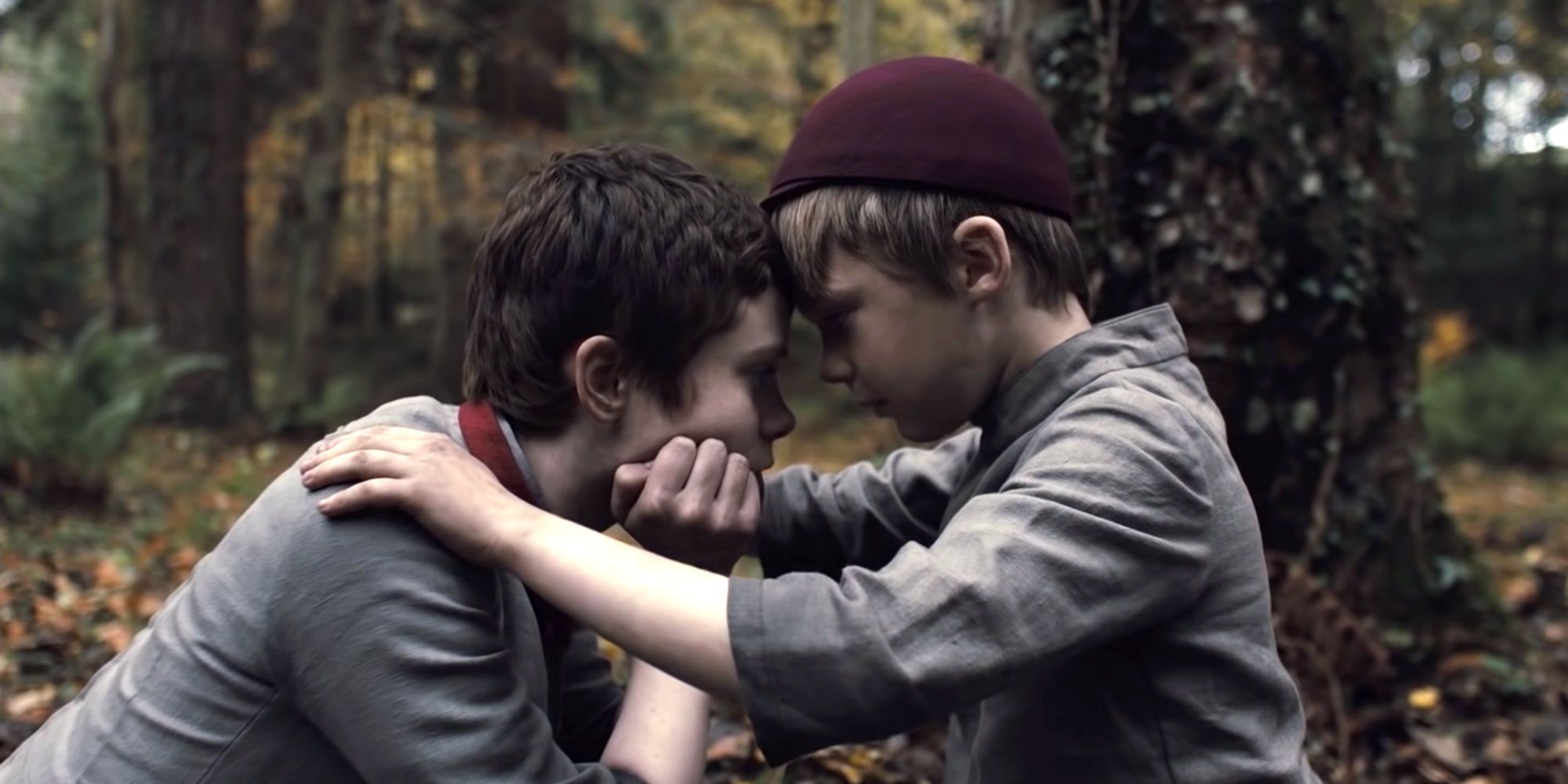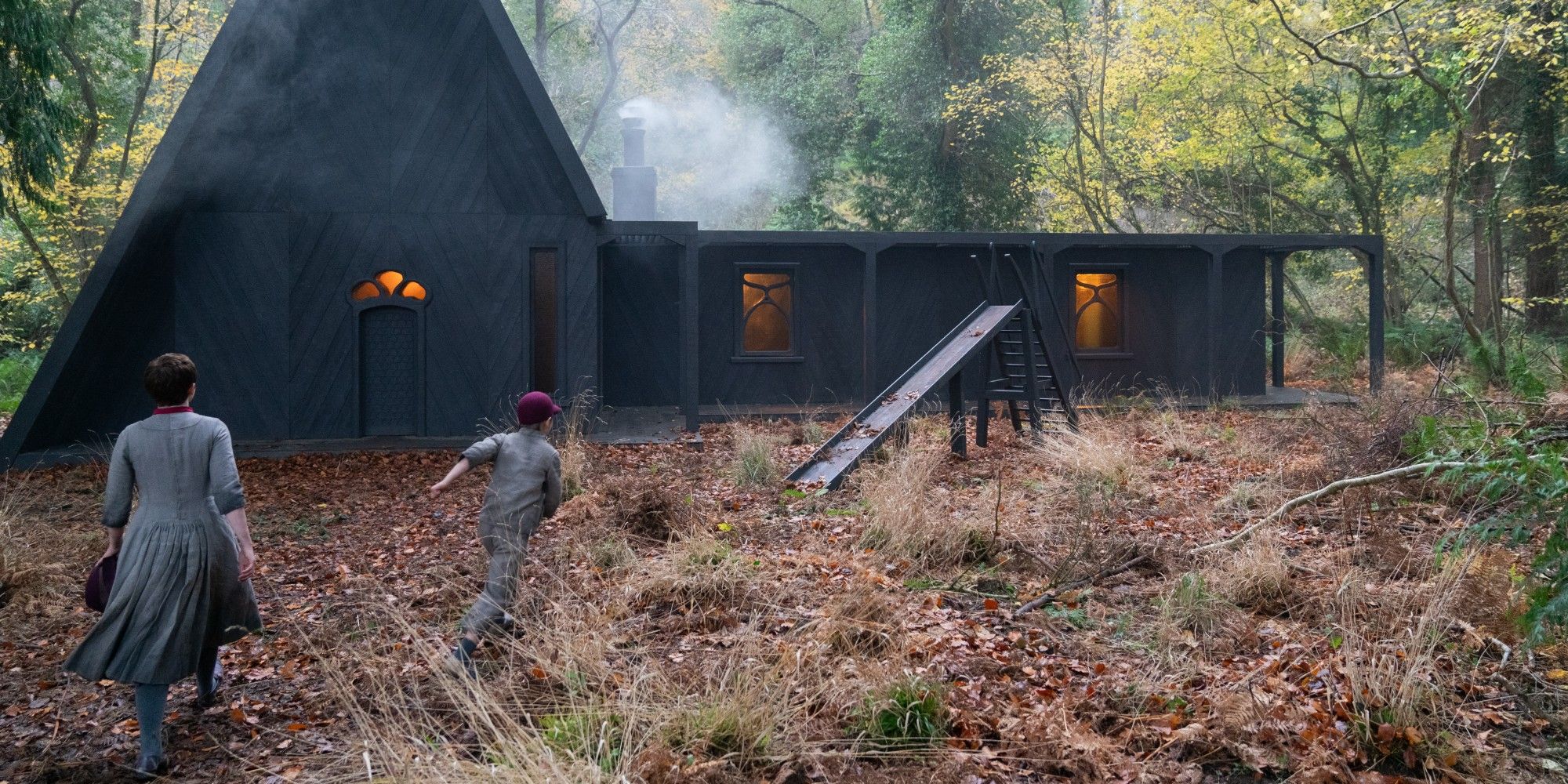Warning! Spoilers for Gretel & Hansel below.
Following a trend of folk horror that has been gracing the big screen in recent years, Gretel & Hansel presents a dark twist on the Grimm Brothers fairy tale, offering an adaptation that stays close to the original story while integrating new ideas.
True to its flipped title, Gretel & Hansel follows the story of two children and their interactions with a witch, with Gretel (Sophia Lillis) as the protagonist. Gretel & Hansel leans into the folk horror atmosphere, inventing its own fairy tale to use as a motif and sprinkling the movie with narration.
So far, Gretel & Hansel has been met with mixed reviews. A visually stunning movie, it uses slow shots of the forest, exploiting the natural eeriness of its setting. It has several moments of true horror, such as Gretel’s horrifying dreamscape and Hansel’s (Samuel Leaky) time alone in the woods learning to chop. However, in vying for a fairy tale vibe, it sometimes falls into clunky dialogue and a loose story.
Gretel & Hansel: How It Compares To The Original Grimm Characters

The three main characters within the movie and the book are the same: Hansel, Gretel, and the witch, who is called Holda (Alice Krige) in the film. The siblings switch power dynamics. In the original fairy tale, Hansel takes the lead and keeps Gretel safe. The movie reframes the relationship by making Gretel a surrogate mother to Hansel. The movie adds a Huntsman and a perverted landowner, but in both Hansel and Gretel are turned out to the woods by a cruel mother figure. Although the movie changes the dynamic between Gretel and Holda, turning it into more of a student-teacher relationship, the broad strokes of each character’s role remain the same. Gretel works alongside the witch, keeping the house clean, while Hansel is trapped and fattened up.
Gretel & Hansel Uses The Darker Parts Of The Grimm Fairy Tale

The Grimm Brothers’ fairy tales have a reputation for being dark, sordid tales rife with blood and dark magic. Gretel & Hansel capitalizes well on this element of its source material, using the crueller elements of the original story, such as young children being abandoned in a forest to fend for themselves. Holda, like her inspiration, eats children, although the movie takes this element one step further by implying that she has also been feeding children to Hansel and Gretel during their stay.
Some of the more whimsical elements of the fairy tale are less prevalent. The children never leave a trail of breadcrumbs to try to get home because movie Gretel is told by an axe-wielding mother in no uncertain terms that they are not welcome back. The world of Gretel & Hansel is even crueller than that of Hansel And Gretel, but subtler. Holda’s house is not made of cake and bread like in the story, but she does lay out a feast to entice the eponymous characters. Grimm Brothers Hansel spends most of the tale locked in a cage; movie Hansel only inches towards a cage at the film’s most tense moment.
Both the book and the movie use the same moment as a climax: Gretel setting the witch on fire in her attempts to save her brother. In the story, she locks the witch into an oven and looks away. In the movie, the audience gets to see in perfect detail how Gretel uses telekinesis to hold Holda over the flames until the witch is nothing but a pile of crumbling bones. The biggest difference in Gretel & Hansel is its ending. Where in the fairy tale the siblings run home to a father who welcomes them back with open arms, the movie leaves an open-ended finale that is less happy and hints at darker fates lying ahead.




